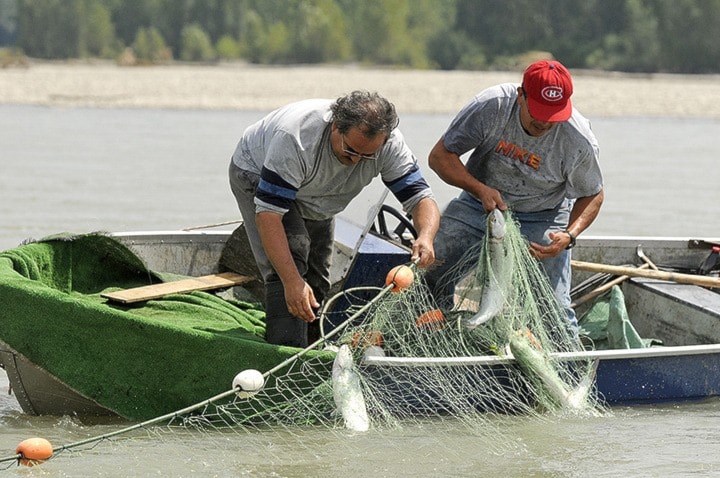Commercial and First Nations fishers have begun catching sockeye on the Fraser this week, and the salmon are already making their way onto local dinner plates.
After a three-hour commercial fishery on Monday, First Nation fishermen and women got their first crack at catching sockeye they could sell Wednesday evening, during a 24-hour set net fishery. There was also a drift net fishery from 7 a.m. to 1 p.m.
Sto:lo Tribal Council fisheries adviser Ernie Crey said Thursday morning “catches are up in the general area of Mission and Abbotsford” through the first hours of the fishery. Full counts were not available by press time.
Local Sto:lo bands had already had three fisheries during which they could catch salmon for food, social and ceremonial purposes. This week, though, was the first “economic opportunity” fishery. The fisheries fall under the purview of comprehensive fishing agreements. The deals let First Nations fishers sell fish they catch to the general public.
On Wednesday, fish caught by commercial fishers were available for sale at roadside stands. The native-operated stands were expected to start operating around the Fraser Valley as early as Thursday.
Sumas First Nation councillor Murray Ned was out on the Fraser Wednesday evening. He expected to be selling fish at his Whatcom Road stand the next day. Prices will vary around the Valley. Ned said he expected to charge $15 for an ungutted sockeye, while one commercial-operated stand was selling gutted salmon for $25.
Ned said there’s both excitement and some anxiety for the opening.
“Our community has been anticipating this since 2010,” he said.
Sockeye play a key role in Sto:lo culture, but they’ve also long been integral to the economies of local First Nations, he noted.
“Historically we’ve always bartered and traded with other First Nations, and when the Hudson Bay Company came in there was that opportunity to trade.
“Today, it’s a little different. It’s extremely important to community members. We have an agreement to sell, we can sell openly, whereas before the government and others haven’t recognized our right to do so.”
Crey said the opening will also have a trickle down effect beyond just the hundreds of local First Nation fishers.
“All of these people will buy their fuel from local gas bars, they’ll buy new engines and have their engines repaired at local … shops, they’ll often buy new boats from local boat sales companies,” Crey said. “This benefits the entire community, not just the aboriginal community.”
